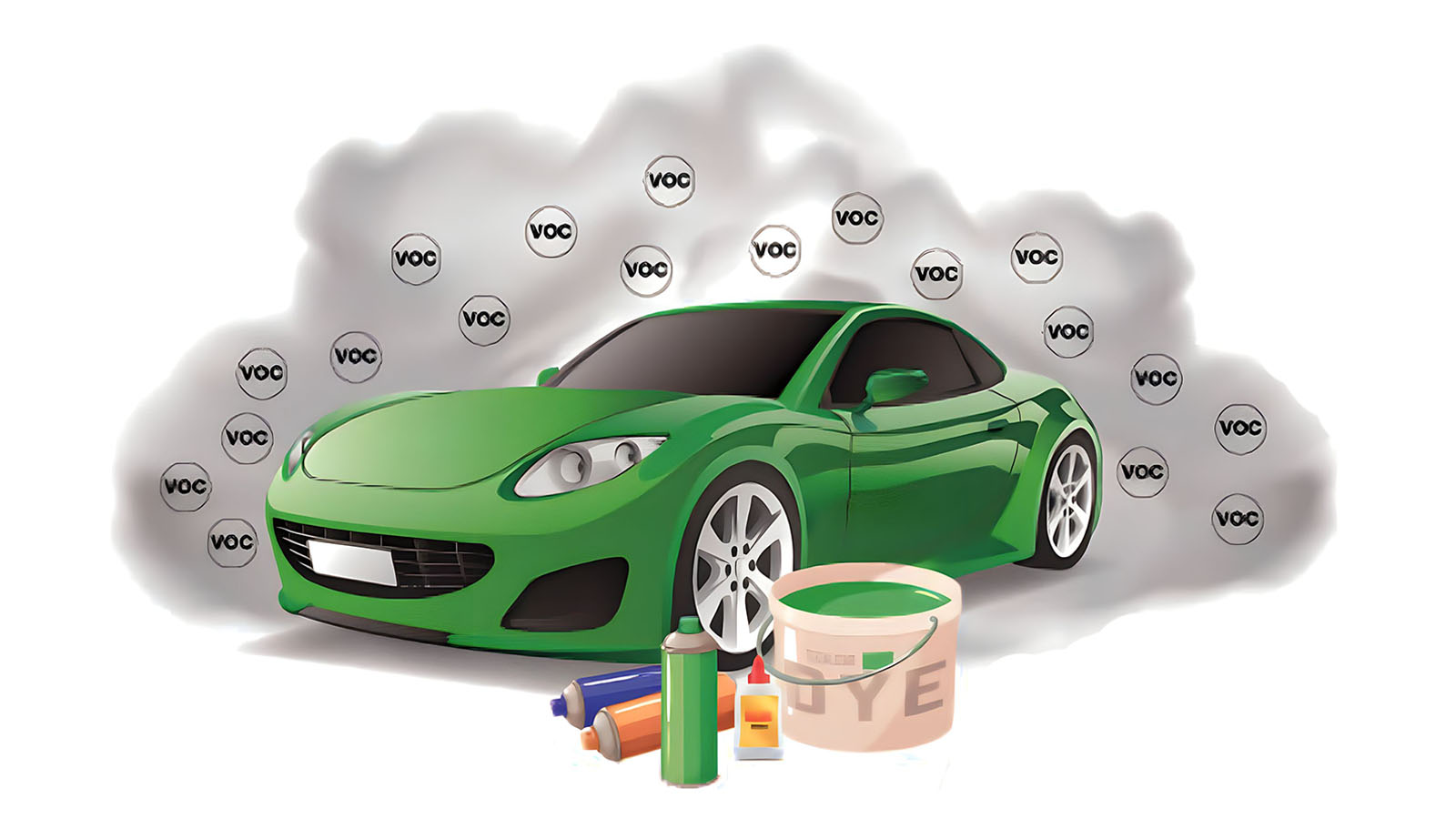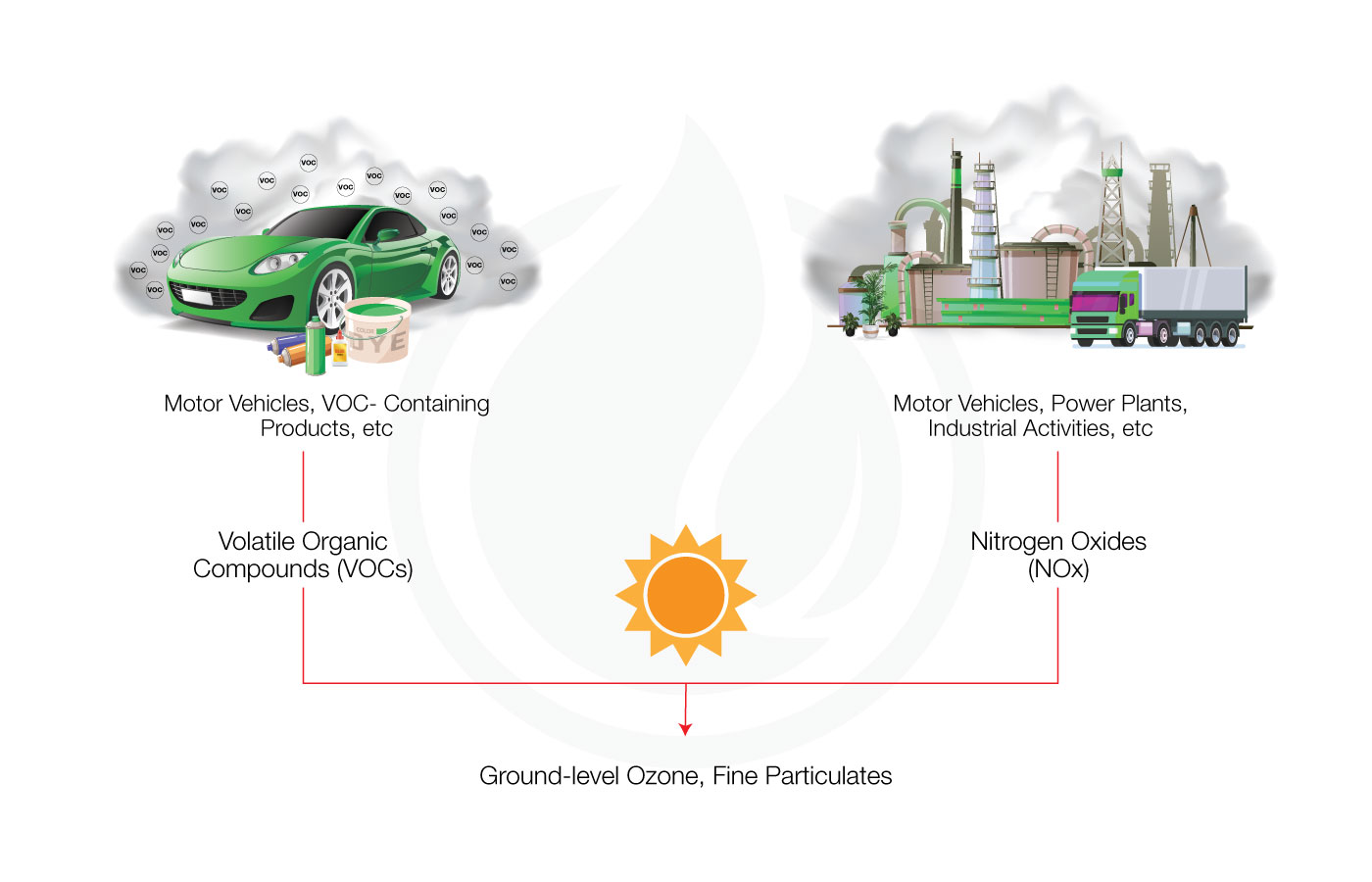We hear the term VOC frequently, especially about its impact on indoor air quality and how it affects our health. But what is VOC and what does it stand for? And are VOCs really harmful, especially indoors? To answer all the important questions, let’s explore what VOC is, the dangers it poses and most importantly, what are the steps taken by corporations (like IGL Coatings) to address the VOC issue. Today, we’re back with the third edition of “The Science of” by IGL Coatings R&D team!
You can view previous articles by our R&D team here & here where they share about ceramic coating and graphene-based coating.
What is VOC?
VOC is defined as Volatile Organic Compound, such as organic solvents, that consist of at least 1 carbon atom, which possesses high vapor pressure (vapor pressure > 0.27 kPa at atmospheric temperature and pressure), excluding methane. However, harmful VOCs like formaldehyde can be toxic to humans and animals. Formaldehyde is a colorless, strong-smelling gas frequently used in building materials and household products, particularly in pressed-wood products, such as particleboard, plywood, and fibreboard, glues, adhesives, permanent-press fabrics; paper product coatings; and certain insulation materials. Remember that strong smell from your new furniture or car? VOCs!
Most VOCs have medium to strong odor except for ethylene glycol that have almost no odor. The most common VOCs released to the environment are benzene, acetone, formaldehyde, methanol, toluene, xylene, hexane, dichloromethane, fuel and d-limonene, common in industries involving paints, coatings, paint strippers, cleaning products, disinfectants, adhesives, aerosol spray, furnishing and fuel.
VOC content and VOC emission
Organic solvents are widely employed in the paint and coating industry. Normally, organic solvents are added into the formulation to improve the flowability of the paint or coating. Upon application of the product, the solvents will be released to the environment through evaporation during the drying process. Due to their high vapor pressure property, VOCs tend to build up quickly in the atmosphere, especially indoors, endangering those who are working in enclosed area with long-term health effects. In year 2016, Occupational Safety and Health Association (OSHA) reported that a worker died due to lethal exposure to dichloromethane when he was using a paint stripper which contained 85-90% of dichloromethane indoors with poor ventilation. Hence, a well-ventilated area is necessary when using any products that consist of VOCs to avoid acute exposure to VOCs.
Certain resins used in paints and coating systems also emit VOCs throughout the curing process although there are no organic solvent present. These are called VOC emission . The most common VOC emission occurring from protective clear coatings in the market are methanol and butanol. As illustrated in Figure 1, solvent-borne PDMS reacts with moisture in the air, which also known as hydrolysis process. Throughout hydrolysis process, short chain PDMS link to each other to form a longer chain of PDMS which adheres to the surface as dry and solid film. Throughout this reaction, methanol is emitted.

Figure 1: Methanol is being emitted throughout the hydrolysis of PDMS when it is in contact with moisture.
How do VOCs affect us and our environment?
The degree of danger of VOCs to human health depends on the level of exposure. The best approach to protecting yourself from the harmful effects is by limiting exposure to VOCs.
Human exposure to VOCs can be classified into short-term exposure and long-term exposure. Continuous exposure to VOC emissions can lead to respiratory problems and may cause irreparable respiratory damage. Other issues that can result from exposure to VOCs include irritation in the eye, nose and throat or skin allergies. Acute exposure to VOCs can results more severe symptoms such as headaches, nausea, dizziness and drowsiness. Prolonged exposure to VOCs can results in damage to liver, kidneys and the central nervous system.
VOCs are components in the formation of smog, a serious environmental issue. VOCs react with nitrogen oxides producing ozone, which is formed through complex photochemical reaction triggered by heat and sunlight. These surface ozone will further combine with smoke released from vehicles to produce yellowish hazy polluted air (smog). Smog reduces visibility and breathability near ground level, especially in urban areas and large cities (as shown in Figure 2). In order to overcome this issue, some countries like USA, Canada and China have tightened their laws to restrict the usage of VOCs and also VOCs emission in its paints and coatings industry.
Figure 2: Formation of smog. (example of figure)
What does Low and Zero VOC from IGL Coatings ceramic coatings mean?
IGL Coatings is the world pioneer in low and zero VOC ceramic coatings, producing high quality nano-technology verified ceramic coatings. We understand the hazards faced by installers and the environment by using products that contain high VOCs.
Since our very first formulation, IGL Coatings have strived to produce high performance but safer, less hazardous and eco-friendly products. The use of our high solids coatings system was designed primarily to minimize the usage of VOCs in our formulation. High solids systems are specially designed to have good flow properties enabling us to formulate without the use of any organic solvents, creating a lower or ZERO VOC product. Also, IGL Coating’s ecocoat series comply with the VOC regulations set by U.S Environmental Protection Agency (EPA) on Automobile Refinishing Coating Component, meaning it does not exceed the limit of 840 g/L . Our research team stays continuously dedicated to improve our current innovative formulations, including working on the design and development of water-based coating system.
To learn more about the eco-friendly coatings produced, formulated and manufactured by IGL Coatings, visit www.iglcoatings.com for more information. You can also email us at marketing@iglcoatings.com for further requests and articles.



